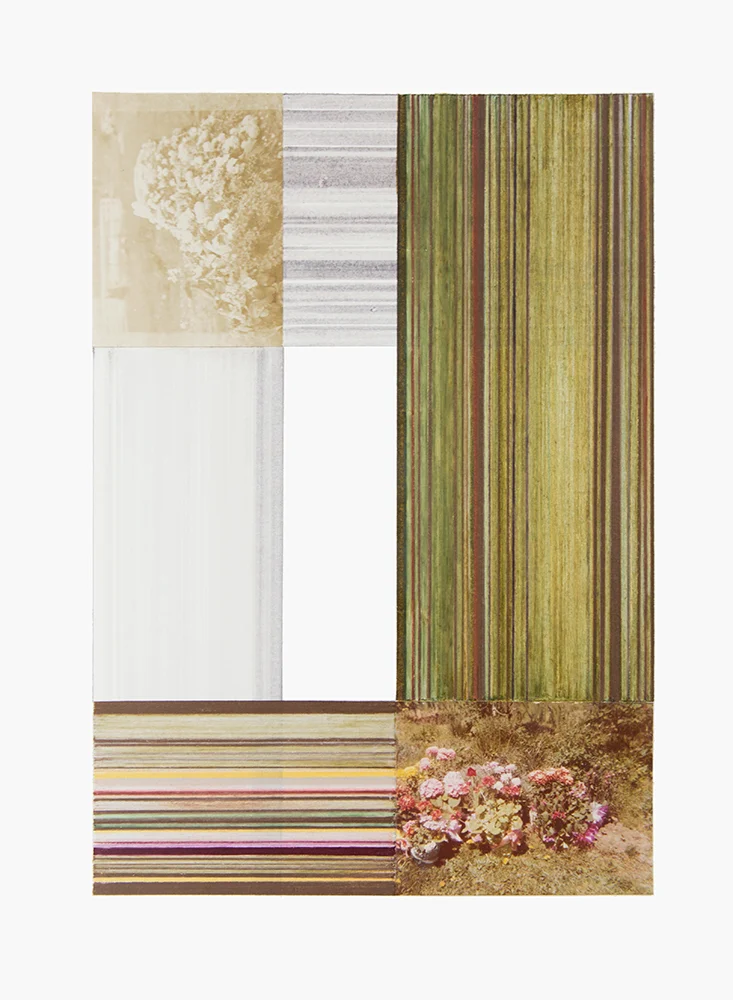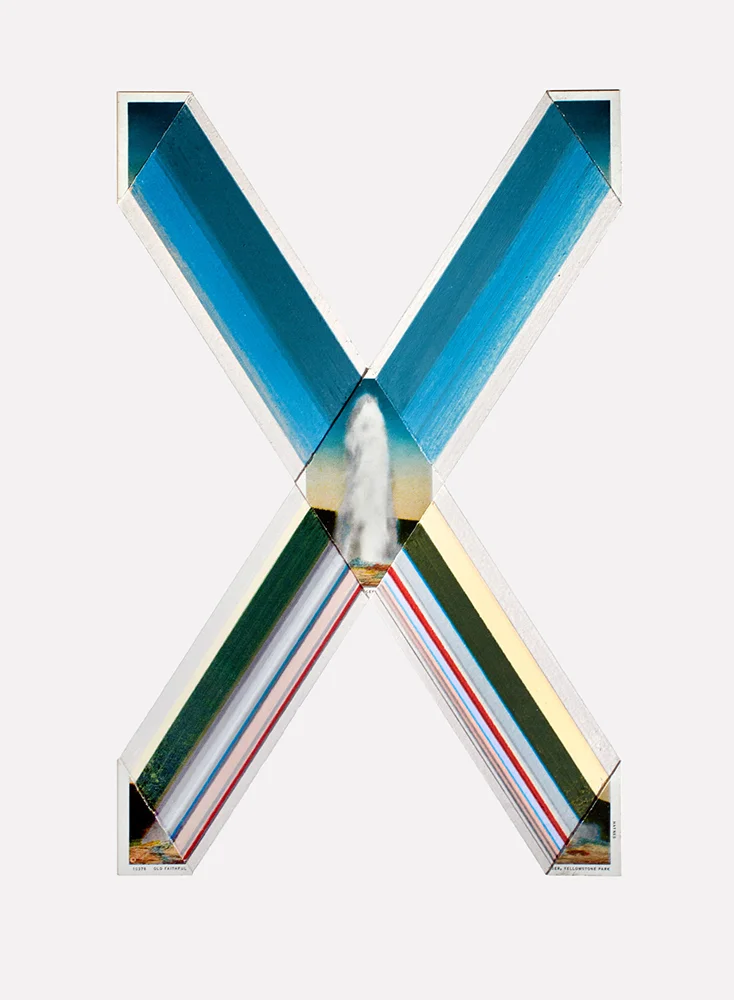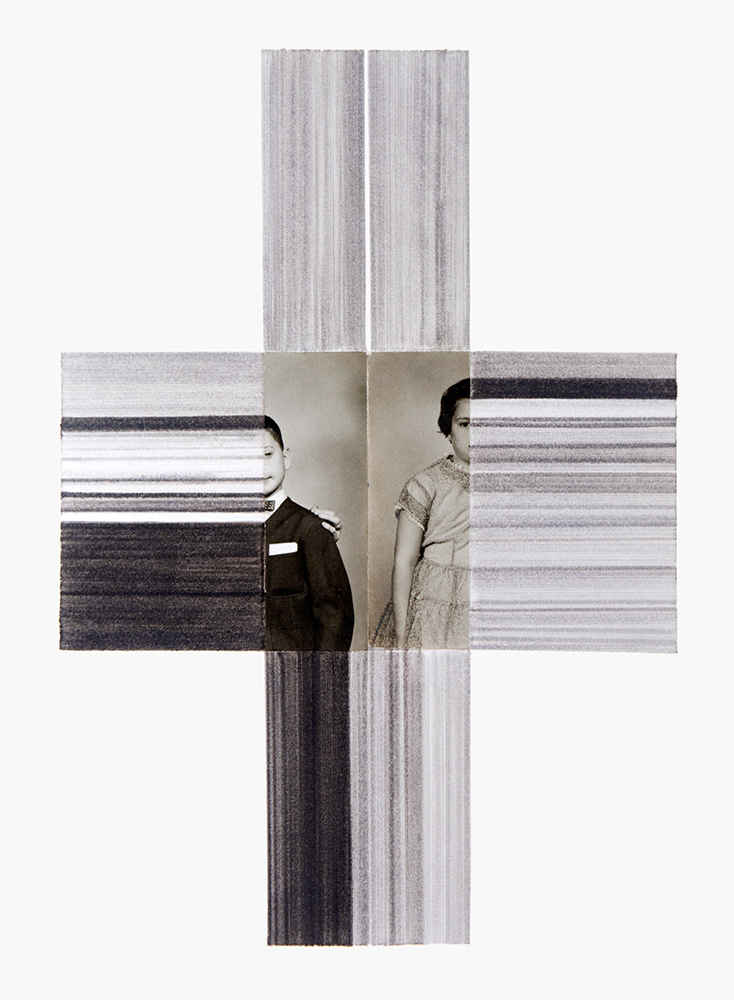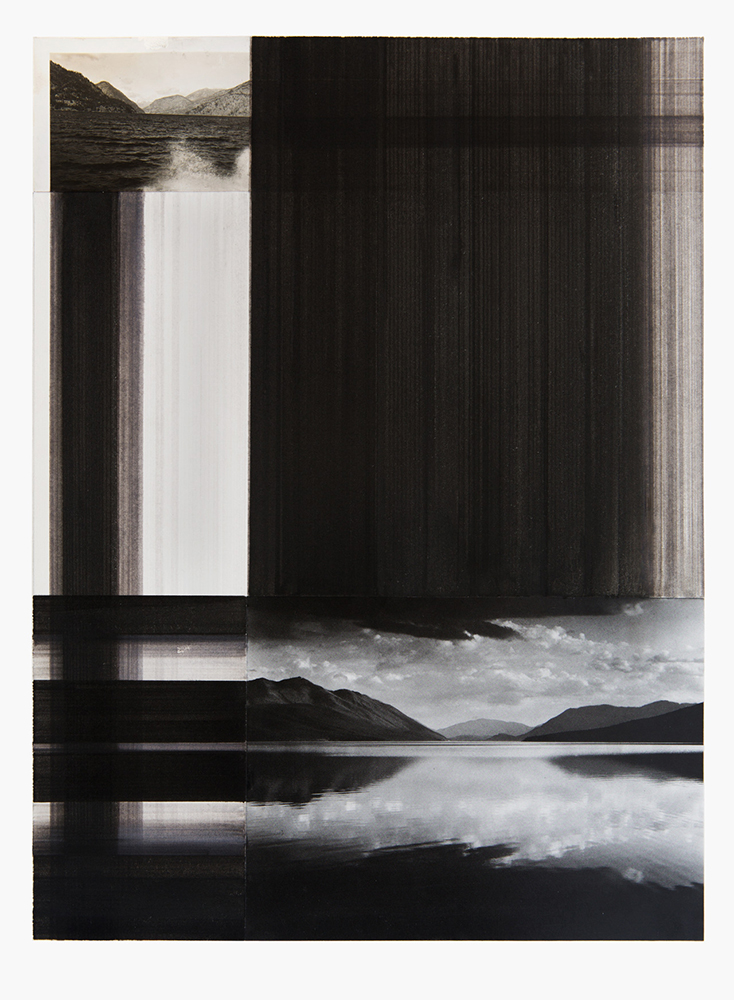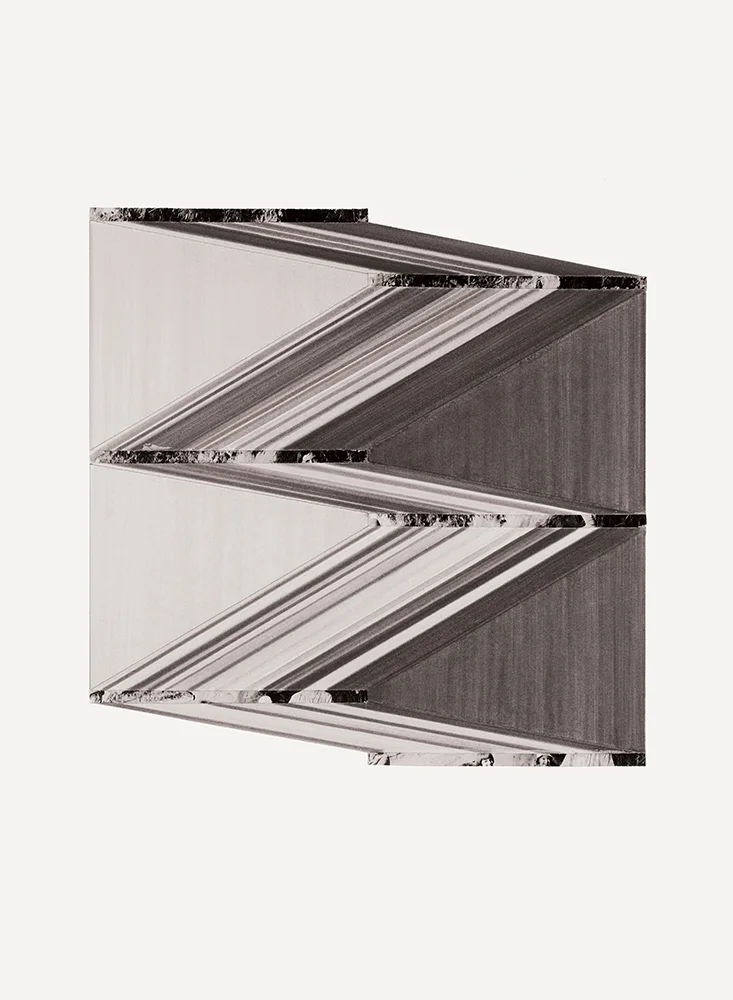Joe Rudko’s Object Drawings are a series of collages that manipulate, obscure, and otherwise distort photographs. They confront viewers to rethink how we experience the act of seeing and understanding the world around us and its increasingly malleable visual representations. While the Seattle-based artist’s final pieces are far from straight photography, they are often rooted in his ideas about its continuously evolving history.
Each piece is made from a mass rotating collection of hundreds of found photographs by unknown photographers, reproductions of Ansel Adams photographs, old Polaroids, pictures of vintage cameras, and random tools and ephemera associated with photography’s history and process. Rudko is drawn to their mysterious qualities, and the potential stories they can tell. “Others remind me of relatives that I barely know,” says Rudko, “whatever it is, I'm attracted to them.”
In one particularly enticing image, Empty Subject, Rudko masks a found vintage portrait with folds of photographic paper and old Kodak envelopes bearing the cropped tagline “Your Assurance of----” which he masks by meticulous streaks of colored pencil. These lines, which appear in many of his images, are intended to mimic digital mistakes on screen-scrolling images. “I’ve made a conscious effort to focus on the tone, color and surface of the image,” says Rudko, “rather than get pulled into the image’s ‘subject.’ I’m redirecting the subject of the photograph to be the photograph itself.”
This process is continuously shifting but is most often informed by what Rudko describes as “a mixture of the photographic content and the general language used to make and describe photographs.” The X shaped image Exploded View, for example, combines the exploded view from old camera manuals illustrating their mechanical parts with an abstraction of color and folded paper that mimic an old found image of a geyser eruption at their center. “The separation of the corners from the center of the image,” says Rudko, “refers to an exploded view diagram that is commonly used in camera instruction manuals. If I’m lucky, the manipulations will reveal my initial attraction to the image.”
Rudko, who was born in 1990, started learning about art and photography when the digital revolution was in full force. By the time he was in high school, Photoshop was nearly two decades old, and conversations about photographic truth and representation had evolved beyond critiques of Capa’s infamous Death of a Loyalist image to questions about the ethics of digital manipulation in contemporary photojournalism. “I’m more attuned to reading photographs in a digital context,” says Rudko, “and that has seeped into my process.”
While he was trained as a photographer, he hasn’t made 'straight' photographs for several years. “The appeal of working with collage and existing photographs, “ says Rudko, “began after I was getting overwhelmed with the shear number of photographs I was seeing everyday.” Using, and playing with existing photographs, allowed him to slow down his generation’s schizophrenic process of reading images, while also gradually retiring old photographs from circulation. “There’s a preciousness and auto-nostalgia about old photographs that I was uncertain about...They continue to fascinate me because they hover between images and objects, representational and abstractions, and all the while they are somehow artifacts of reality.”
Bio: Joe Rudko was born in Everett, WA. He received his BFA in photography and drawing at Western Washington University. He has exhibited in Portland, Seattle, Bellingham in the Northwest, as well as been included in exhibitions in Los Angeles, Memphis and New York. His work has been featured in The Stranger, Art Ltd. Booooooom, Aint-Bad Magazine, Beautiful Decay, Wavepool and Juxtapoz Magazine Online.



